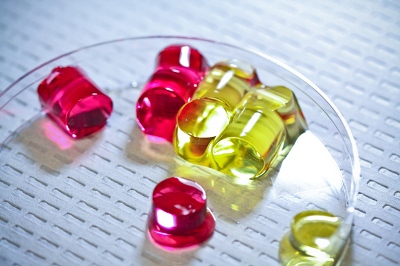A self-healing hydrogel material has been developed by bioengineers from the University of California, San Diego (UC San Diego).
 Smart, self-healing hydrogels
Smart, self-healing hydrogels
The material forms a strong bond, which can resist repeated stretching. The hydrogel is made of polymer molecule chains that create a flexible, jelly-like material. Till date, it has not been possible for researchers to develop hydrogels that can quickly fix themselves when a cut is introduced. However, UC San Diego researchers have overcome this challenge by using ‘dangling side chain’ polymer molecules. The self-healing hydrogel has several applications, including plastics, industrial sealants, targeted drug delivery and medical sutures.
A team led by Shyni Varghese, a professor of bioengineering at UC San Diego, has carried out computer simulations to design the hydrogel’s side chain molecules. The simulations have shown that the capability of the material to self-heal mainly depends on the length of the molecules. Thus, hydrogels with an accurate length of the side chain molecules have revealed higher self-healing property. Researchers have also found that when two cylindrical portions of the gel material are placed in an acidic solution, they bind together immediately. By adjusting the pH level of the solution, the cylindrical pieces can be welded and separated easily.
Smart, Self-Healing Hydrogel Developed by UC San Diego Bioengineers
The strength and flexibility of the hydrogel in an acidic condition makes it suitable for using as an adhesive to cure stomach perforations and for drug delivery to treat ulcers. In addition, the self-healing material can be useful in recycling and energy conservation sectors. Varghese and her team also expect to develop other types of self-healing hydrogels for extending the applications beyond acidic conditions.